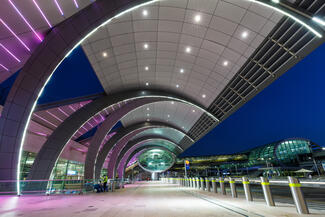The United Arab Emirates is grappling with unprecedented flooding following the heaviest rainfall ever recorded in the nation. Dubai International Airport, the busiest hub for international travel, has resumed partial operations even as floodwaters continue to inundate major roads and residential areas.
On Thursday morning, global flights were allowed back into Terminal 1, and Emirates, a major long-haul carrier, reopened Terminal 3 to local passengers. Despite the resumption, Paul Griffiths, CEO of Dubai Airports, stated that the airport would need at least another 24 hours to return to normal operations. Griffiths revealed that the airport had to deploy 22 tankers equipped with vacuum pumps to remove water from the premises, emphasizing the dramatic nature of the situation.
The deluge, which dumped more than 5.59 inches of rain over 24 hours in Dubai, has overwhelmed the UAE’s drainage systems, causing extensive flooding in neighborhoods, business districts, and along the 12-lane Sheikh Zayed Road highway. This event surpasses any previous records since data collection began in 1949, according to the state-run WAM news agency.
In response to the crisis, Sheikh Mohammed bin Zayed Al Nahyan, ruler of Abu Dhabi and Emirati leader, addressed the nation, promising swift action to assess and repair the infrastructure damage. The schools will remain closed until next week, and civil defense workers continue to struggle with pumping operations in severely affected areas like the Mudon community.
The flooding in neighboring Oman has also been severe, with the death toll from recent storms rising to at least 21. In Dubai, the historic rainfall has sparked discussions about the potential impact of the UAE's cloud seeding operations and the broader implications of climate change, highlighted during last year's COP28 climate talks hosted in Dubai.


